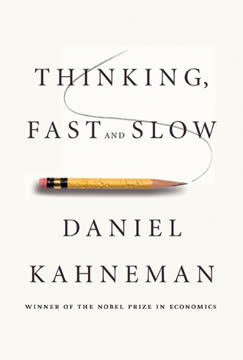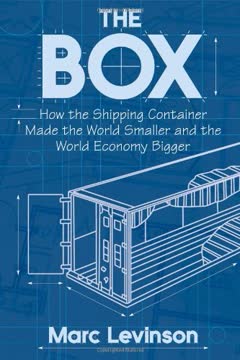Key Takeaways
1. Master Macrowave Logic: Connect Macro Events to Market Moves
Every time a new macroeconomic wave hits the economy, its impact ripples through the U.S. and global financial markets in both systematic and predictable ways.
Understanding the ripple effect. Macrowave logic is about understanding the connections between macroeconomic events and their impact on financial markets. It involves tracing the chain of events from an initial event, such as an inflation report, to its ultimate effect on stock prices. This requires understanding how key macroeconomic variables like inflation, unemployment, and interest rates interact.
Applying macrowave logic. For example, if inflation increases, the Federal Reserve is likely to raise interest rates. Higher interest rates can attract foreign investment, increasing demand for dollars and driving up the dollar's value. A stronger dollar can then increase the trade deficit by making U.S. exports more expensive and imports cheaper.
Identifying winners and losers. By understanding these relationships, investors can anticipate market trends and identify sectors and stocks that are likely to benefit or suffer from macroeconomic events. Export-dependent sectors might suffer from a stronger dollar, while companies that import heavily into the U.S. might see their profits rise.
2. Understand the Warring Schools of Macroeconomics
If you are going to trade or invest successfully, it is essential that you understand the basic differences between the warring schools of macroeconomics.
Different schools, different policies. The decisions made by policymakers in Congress, the White House, and the Federal Reserve are often influenced by the prevailing school of macroeconomic thought. These schools include classical economics, Keynesianism, monetarism, supply-side economics, and new classical economics. Each school prescribes different policy cures for economic ills.
Keynesian vs. Supply-Side. For example, Keynesians generally favor active fiscal and monetary policy to manage the economy, while supply-side economists advocate for tax cuts and deregulation to stimulate growth. Understanding these differences is crucial for anticipating policy responses to economic challenges.
Impact on the market. The stock market's reaction to economic problems will be shaped by whichever of the warring schools has the ear of the President and the Congress and the Federal Reserve. Depending on which solutions are adopted, the stock market will react in different ways and in different degrees.
3. Fiscal Policy: Government Spending and Taxing
Fiscal policy uses increased government expenditures or, alternatively, tax cuts to stimulate or expand the economy.
Government's toolbox. Fiscal policy involves the government's use of spending and taxation to influence the economy. Expansionary fiscal policy, such as increased government spending or tax cuts, aims to stimulate economic growth. Contractionary fiscal policy, such as decreased government spending or tax increases, aims to cool down an overheated economy.
Financing the deficit. When the government increases spending or cuts taxes, it often incurs a budget deficit. The government can finance this deficit by selling bonds or printing money. Each option has different implications for the financial markets.
Bond vs. Money. Bond financing can raise interest rates and crowd out private investment, making both the stock and bond markets nervous. Printing money can lower interest rates but may lead to inflation, which can also spook the markets.
4. Monetary Policy: The Federal Reserve's Influence
Indeed, if you want a simple model for predicting the unemployment rate in the United States over the next few years, here it is: It will be what Greenspan wants it to be, plus or minus a random error reflecting the fact that he is not quite God.
The Fed's power. Monetary policy, primarily controlled by the Federal Reserve (the Fed), involves managing the money supply and interest rates to influence economic activity. The Fed uses tools like open market operations and setting the discount rate to expand or contract the money supply.
Monetary Transmission Mechanism. The monetary transmission mechanism explains how changes in interest rates affect the economy. For example, raising interest rates can reduce business investment, consumer spending, and exports, ultimately slowing down economic growth and curbing inflation.
Global impact. The Fed's actions can have significant spillover effects on foreign economies. For example, raising interest rates in the U.S. can strengthen the dollar, potentially harming European export industries.
5. Embrace the Eight Principles of Macrowave Investing
Macroeconomic events affecting one particular company or sector invariably have spillover effects that wash over other companies, sectors, or markets.
The foundation of success. Macrowave investing is guided by eight key principles that aim to maximize gains, minimize losses, and preserve capital. These principles emphasize speculation over gambling, diversification, trend following, market awareness, and strategic thinking.
Key principles:
- Speculate, don't gamble
- Minimize market, sector, and company risk
- Ride the trend
- Trade across markets
- Follow the macroeconomic trend
- Exploit sector differences
- Observe market interconnections
- Think strategically
Chess, not checkers. By adhering to these principles, investors can make more informed trading decisions and navigate the complexities of the financial markets with greater confidence.
6. Sector Selection: The Key to Outperformance
Sector risk typically accounts for at least 50 percent and perhaps as much as 80 percent of an individual stock price’s movement.
Sector-driven market. The stock market is often driven by sector-level trends rather than individual company performance. Sector risk, which refers to events affecting a specific industry, can account for a significant portion of a stock's price movement.
Sector rotation. Understanding sector differences is crucial for identifying opportunities and managing risk. Different sectors react differently to macroeconomic events, such as changes in interest rates, inflation, or economic growth.
Sector examples. For example, interest-rate sensitive sectors like banking and brokerage typically react strongly to inflation news, while defensive sectors like utilities and consumer staples react weakly. By understanding these relationships, investors can make informed decisions about which sectors to invest in or avoid.
7. Track Sector Trends and Trade Accordingly
You will consistently achieve a higher percentage of profit and lower your risk by trading a basket of stocks within a sector.
Sector awareness. To effectively implement a macrowave investing strategy, it's essential to track sector trends and identify strong and weak sectors. This involves monitoring various indicators and news sources to gauge the performance of different industries.
Sector tracking tools:
- Financial news publications
- Online financial portals
- Sector-specific exchange-traded funds (ETFs)
- Sector indexes
Basket trading. One approach to sector trading is to create a basket of stocks within a specific sector. This involves selecting a group of strong companies within the sector and trading them as a unit. This strategy can help diversify risk and maximize potential gains.
8. Protect Your Capital: Money Management Rules
The elements of good trading are: (1) cutting losses, (2) cutting losses, and (3) cutting losses.
Capital preservation. Protecting your trading capital is paramount for long-term success. This involves adhering to a set of money management rules that minimize losses and maximize gains.
Key money management rules:
- Cut your losses quickly
- Set intelligent stop losses
- Let your profits run
- Never let a big winner become a loser
- Never average down a loss
- Avoid overtrading
- Use market orders in trending markets
- Use limit orders in sideways markets
- Avoid market orders before the open or with IPOs
- Choose the right broker
Discipline is key. By following these rules, investors can avoid emotional decision-making and protect their capital from significant losses.
9. Manage Your Risk: Trading Discipline
If you stick around when the market is severely against you, sooner or later they’re going to carry you out.
Risk mitigation. Managing risk is an essential component of macrowave investing. This involves understanding and mitigating various types of risk, including market risk, sector risk, and company risk.
Key risk management rules:
- Watch the macroeconomic events calendar
- When in doubt, go flat
- Beware the earnings announcement trap
- Trade only liquid stocks
- Trade the right share size
- Avoid highly correlated trades
- Match volatility to risk tolerance
- Scale in and out of trades
- Be wary of margin
- Analyze your trades
- Do your research
- Ignore hot tips
Informed decisions. By adhering to these rules, investors can make more informed trading decisions and minimize their exposure to potential losses.
10. Integrate Macrowaves into Any Investment Style
The idea that the market has to go up for them to make money. You can make money in any kind of market if you use the right strategies.
Adaptability. A macrowave perspective can enhance any investment style, whether it's day trading, swing trading, or buy-and-hold investing. By understanding the macroeconomic forces driving market trends, investors can make more informed decisions regardless of their preferred strategy.
Macrowave benefits:
- Better predict market trends
- Identify sector opportunities
- See the market chessboard more clearly
Style examples. For example, a day trader can use macrowave analysis to avoid trading against the trend, while a buy-and-hold investor can use it to diversify their portfolio across different sectors.
11. The Macrowave Investor's Checklist: A Pre-Trade Ritual
Always respect the marketplace. Never take anything for granted. Do your homework.
Pre-trade preparation. Before making any trade, macrowave investors should follow a checklist to ensure they have considered all relevant factors. This checklist includes assessing the broad market trend, evaluating individual sector trends, and choosing potential trade targets.
Checklist categories:
- Assess the broad market trend
- Assess individual sector trends
- Choose potential trade targets
Golden rules. The ultimate goal is to trade according to the golden rules of macrowave investing: buy strong stocks in strong sectors in uptrends and short weak stocks in weak sectors in downtrends.
Last updated:
Review Summary
Readers generally find "If It's Raining in Brazil, Buy Starbucks" informative for understanding macroeconomic factors affecting markets. Many appreciate its insights on economic indicators and their impact on investments. Some readers note it's particularly useful for long-term traders and provides a broader perspective on investment decisions. However, a few reviewers mention the need to reread for full comprehension and criticize the overuse of examples. Overall, the book receives positive ratings for its educational value in linking economic news to stock market behavior.
Similar Books






Download PDF
Download EPUB
.epub digital book format is ideal for reading ebooks on phones, tablets, and e-readers.









